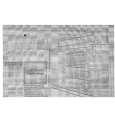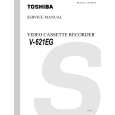|
|
|
Kategorie
|
|
Informacje
|
|
Polecamy
|
|
|
 |
|
|
Dla tego produktu nie napisano jeszcze recenzji!
Description
The CAD M179 is a variable-pattern side address microphone designed for professional recording and broadcast applications. The implementation of high speed, low noise, low distortion electronics makes the M179 the ideal candidate for the most critical applications.
Professional Microphones M179 Condenser Microphone
The CAD M179 combines a vintage capsule design with advanced electronics. The M179 features the dual pattern version of the original Equitek E-300 capsule, an externally biased capsule with a gold sputtered 1.1" diaphragm. Typical FET (field effect transistor) condenser microphones use discrete designs. This means they use individual transistors that must be carefully matched for proper characteristics. Even with careful matching, discrete designs are inherently nonlinear. M Series microphones use a different approach. We do not use any discrete FETs. Instead, we use advanced high speed OpAmps (Operational Amplifiers). These OpAmps are individually laser trimmed for optimum performance and have very high gain. This allows a large amount of negative feedback to be used to significantly reduce any non-linearity. We have also integrated a new discrete high efficiency power supply circuit allowing greater dynamic range and lower self noise. The CAD M179 combines an advanced headamp design, with extremely efficient power circuitry, and a vintage capsule design, resulting in superior transient response, low distortion, low noise, and high output level. The bottom line is we believe you will find the M179 to have a remarkably open and clean sound that will enhance any project.
� � � � � � � �
The CAD M179 incorporates a number of unique features including: Continuously Variable Pattern with a "Hard" Cardioid center detent Large 1.1" Dual Diaphragm External Bias Condenser Capsule. Gold Sputtered Diaphragms. High SPL Capability (143 dB SPL with pad) Transformerless balanced output circuits. 20 dB non capacitive pad 6dB/Octave @ 100Hz High-Pass filter Stainless steel internal pop/EMI filter.
Switch Functions
Hi-Pass Right position = Low end roll off below 100 Hz. Left Position = Flat low end response.
Pad 0dB = Full gain (Highest Sensitivity) -20dB = 20dB Gain reduction (Highest Clipping Level)
The pattern control knob on the M179 has a center detented Cardioid position. This allows the user to quickly and consistently lock the mic in a "hard" Cardioid pattern. By turning the knob clockwise from the center, the pattern varies continuously from Cardioid, to Subcardioid, through Omnidirectional. By turning the knob counterclockwise from the center, the pattern varies continuously from Cardioid, to Hypercardioid through Bidirectional (Fig.8). This allows the user to adjust to the optimal pattern needed for almost any recording or live situation.
Getting Started
The high gain and wide bandwidth of the M179 microphone will easily overload the inputs of many professional mixing consoles if adequate precautions are not taken. This is especially true if the microphone is going to be used on percussion or amplified electronic instruments. If you have never used this microphone before, we strongly recommend that you initially reduce the system gain by doing one or more of the following: � Enable the pad switch on the input of your mixing console. � Start with the input trim control on your mixing console turned down to a low level. � Enable the -20 dB pad switch on the M179 microphone.
The M179 requires a 24, or 48 Volt Phantom power supply, delivering at least 8mA for proper operation.
User Techniques and Applications
The CAD M179 can be used in a broad number of applications, ranging from live reinforcement to the most critical studio situations. The M179 is ideal for vocals and voice overs, yet it also excels at some of the most demanding instrumental projects. The M179 is great for virtually all acoustic, wind, and amplified instruments. The M179 has been proven to be outstanding in all of these applications and more. Its uncolored sonic characteristics allow you to decide how an instrument or vocal will sound in the mix.
|
|
 |
> |
|





